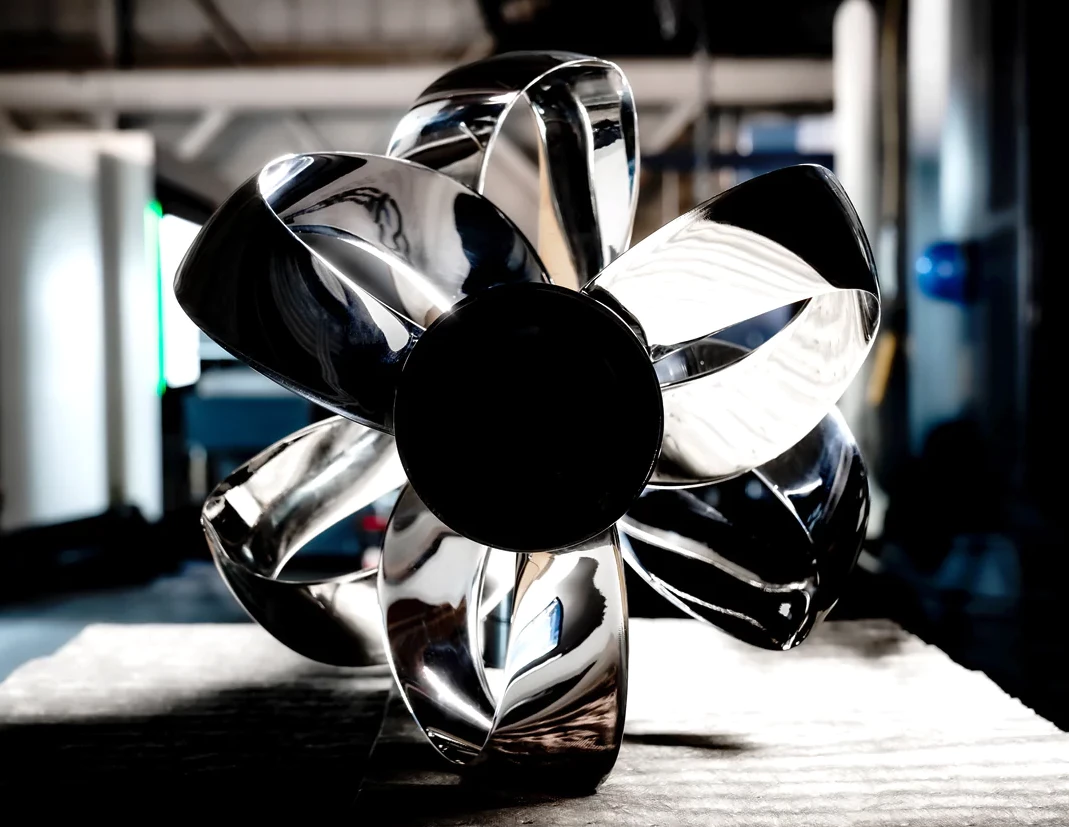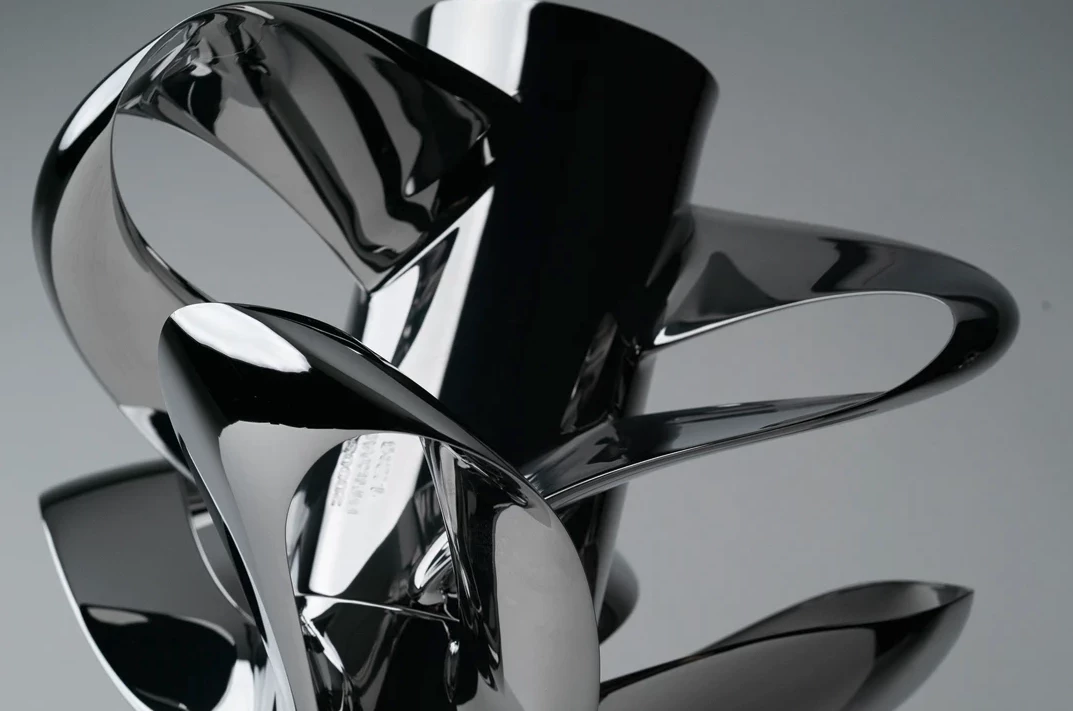The multi-award-winning Sharrow Propeller family is growing. The new Sharrow CX incorporates the company's looped design into a contra-rotating propeller set. The sculptural new prop doubles up on blades with the promise of bringing Sharrow's efficiency-boosting, noise-cutting benefits to the already efficient world of contra-rotating outboards and sterndrives from top names like Volvo and Mercury.
New Atlas' Loz Blain did an excellent job diving into the newly energized world of looped air and sea propellers in a primer just over a year ago. In looking at Sharrow Marine's design, advantages included drastically reduced outboard noise and faster, more efficient on-water performance.
In working to make its unique propeller design available to a wider range of marine drives and, thereby, boats, Sharrow launched the all-new CX for preorder this week. The latest Sharrow features two propellers that rotate around a single shaft in opposite directions. Sharrow offers CX variants built to spec for the Volvo Penta DuoProp sterndrive, Mercury V12 outboard and Bravo III sterndrive, and Suzuki 300 and 350 outboards.

The contra-rotating propeller is an already-efficient platform for Sharrow's twisty looped blades to call home, dating back over a century in aircraft and over four decades in maritime vessels. Volvo Penta is credited with patenting the first nautical contra-rotating propeller application in 1982 with the DuoProp drive that still serves as one of its brands today. Inspired by the contra-rotating propellers the Swedish navy was using to prevent unwanted rotational movement in torpedoes and improve speed and directional stability, Volvo Penta adapted the design for boat drives.
The contra-rotating propeller is a fairly simple concept that features two propellers rotating in opposite directions around the same shaft. The independent and opposite rotations counter the energy otherwise lost in tangential flow, better focusing it on the thrust that drives the boat. The drive system then runs more efficiently than a comparable single-prop drive, resulting in a vessel with improved acceleration and speed, better fuel efficiency or a combination of both. Volvo also claims handling and tracking improvements.
Beyond a general promise of better efficiency, agility and maneuverability, Sharrow doesn't dig too deep into how its tipless blades might improve upon the benefits already inherent in contra-rotating propulsion. It will definitely be interesting to hear results from the water as to how the two fare together, though.

Sharrow's single props have seen plenty of testing on various marine drives equipped to different vessels, including by third parties such as BoatTest.com. Specific numbers vary by test, but Sharrow claims that its patented props can improve efficiency to the tune of 30 percent more range, boost reverse thrust by 50 percent, and reduce noise dramatically. It has taken home several awards since introducing the propeller in 2020, including a 2023 TIME Best Inventions award and a 2022 Marine Power Innovation Award from Boating magazine.
While Sharrow has never had problems being recognized for innovative design, it doesn't seem destined to get noticed for affordable pricing anytime soon. We noted last year that its US$4,999 MX propeller was roughly 10 times the price of a comparable regular propeller. Adding in a second set of loops to rotate in the opposite direction spikes pricing up between $8,995 and $11,995, depending upon the make/model for which it's specced.
On the plus side, only $100 of that is due on preorder and deliveries won't begin until Spring 2026 (Northern Hemisphere), leaving plenty of time to ponder that additional $8895+. Sharrow CNC-machines the propellers from premium stainless steel alloy in the USA and backs them with a lifetime warranty.
Source: Sharrow Marine




